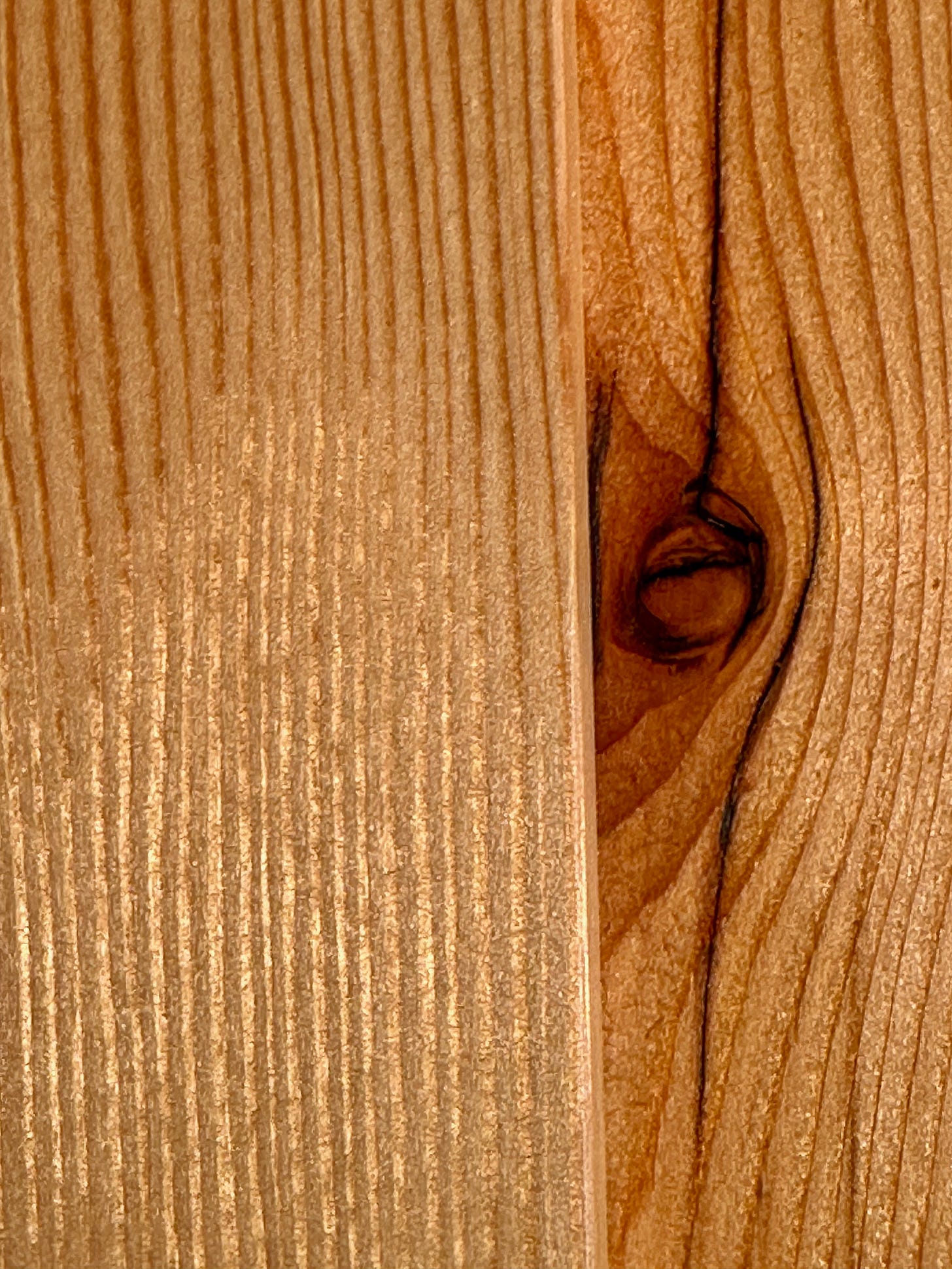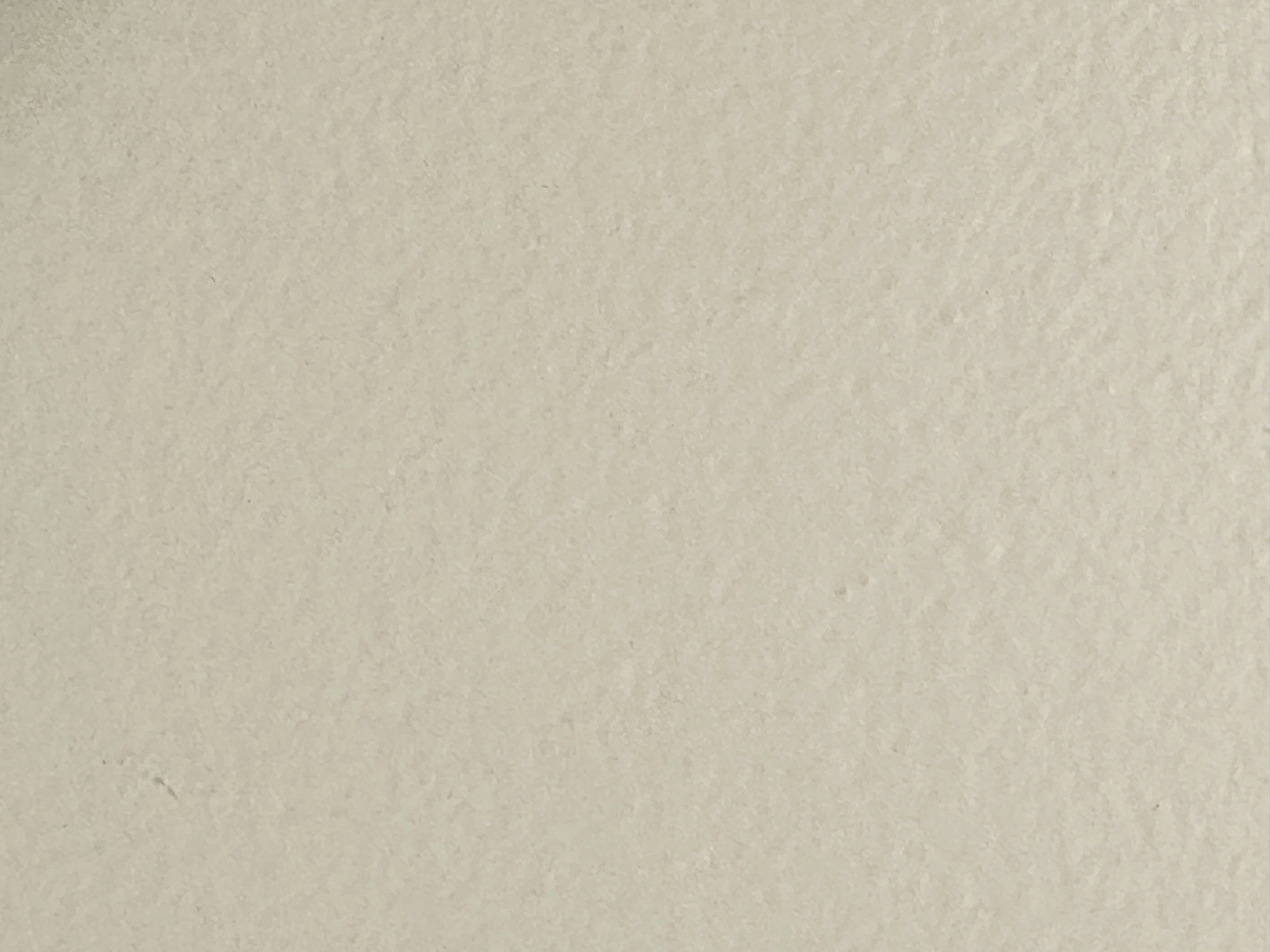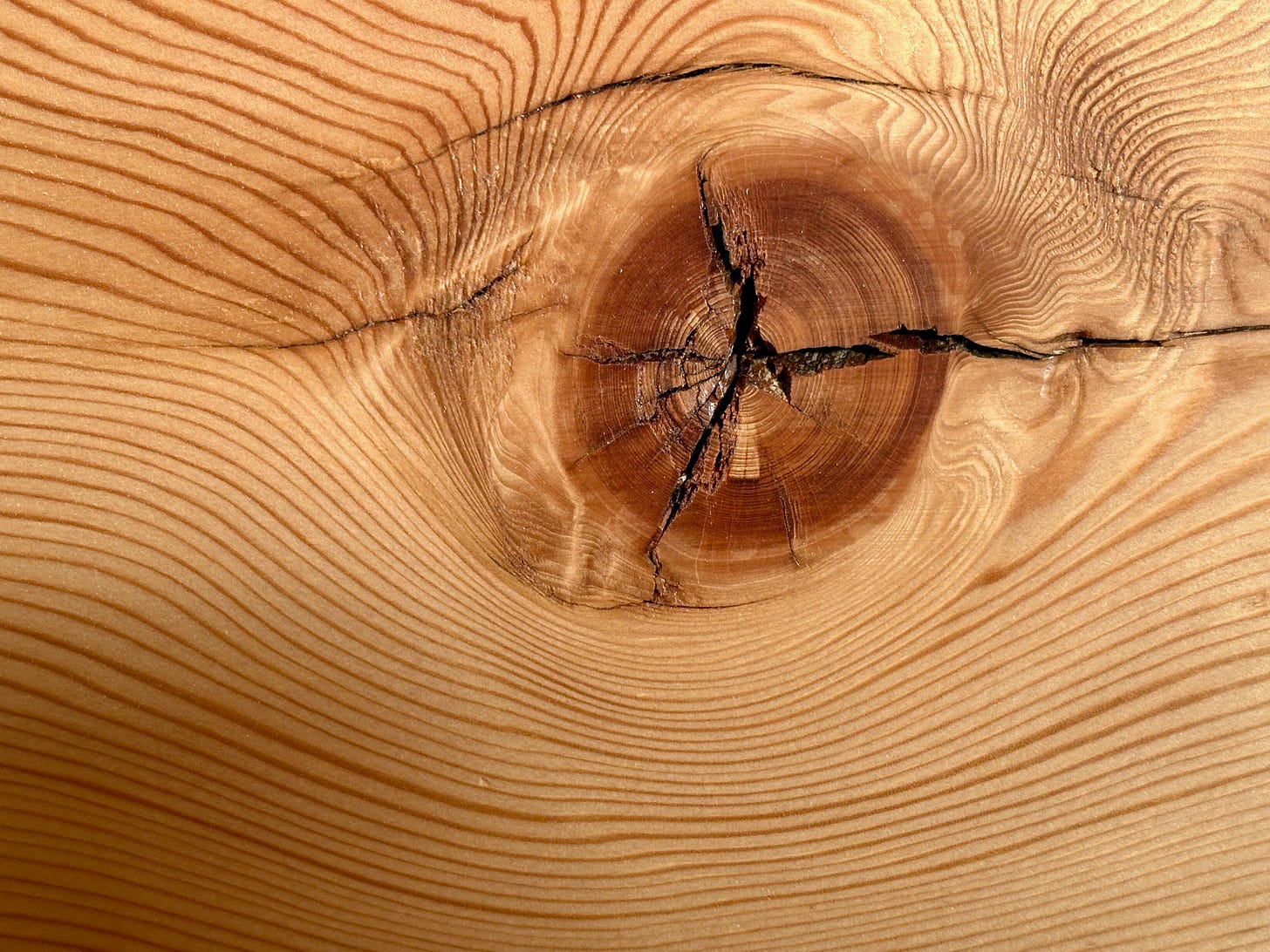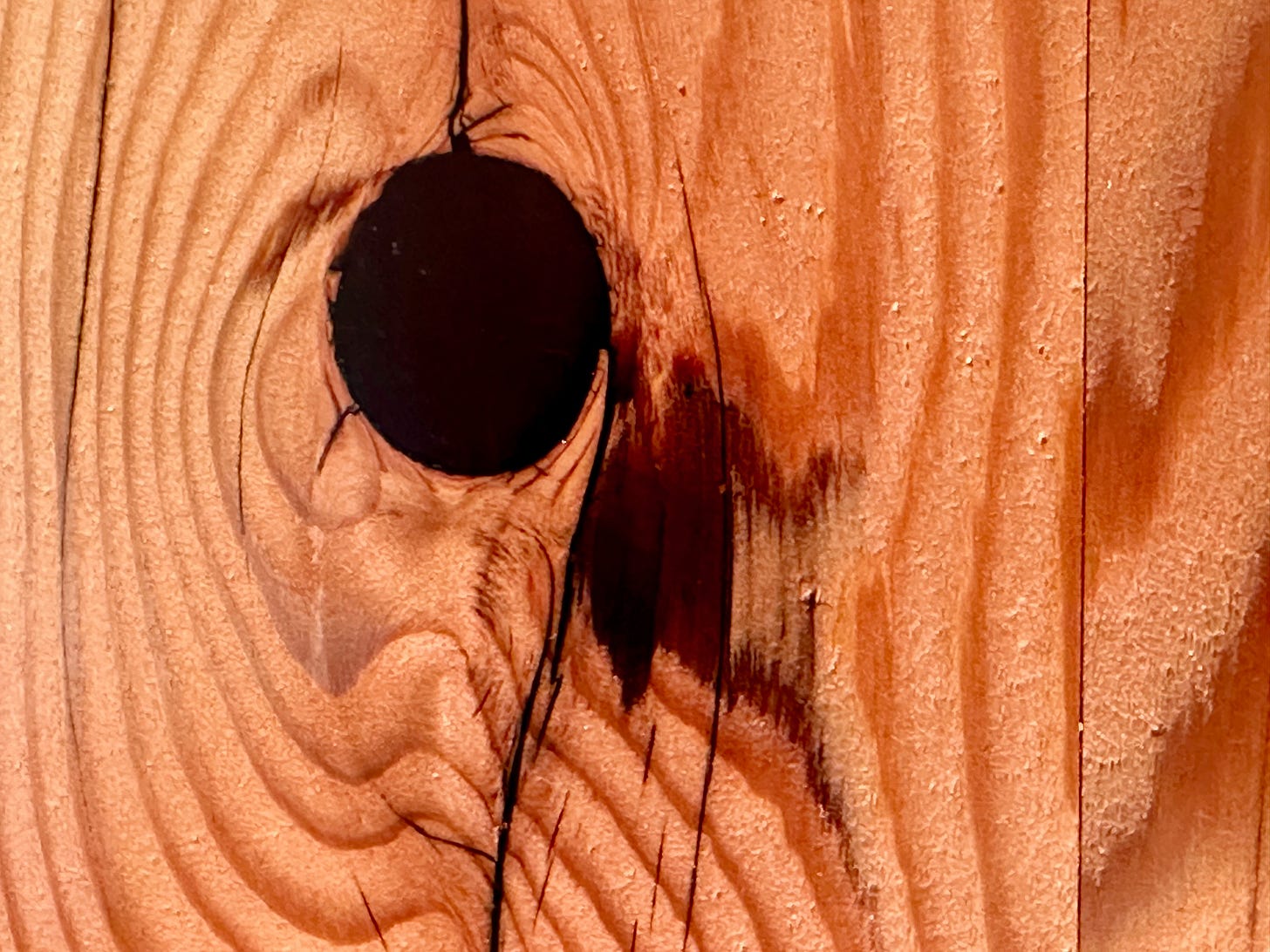“Wherever you are,
there is another door.”
--“Smoke,” Smoke’s Way, by William Stafford
There is the door and then there is what the door has to say. Every created thing is continually expressing itself. Sometimes that expression is full of utility, like a door for a bathroom, and sometimes that expression comes in more mystical layers, like this door to a bathroom.
What I like about working in old wood is the uniqueness found in every square inch. Wood is never finished expressing itself. We clearly cherish the life of trees, they can calm our spirits even as they take in our heavy exhales and give us in return our oxygen. And then the boards that come from a tree speak of the life of the tree for as long as they hold a place in this world. Hundreds of years ago, the trees that made the boards that have come to be a part of this door, experienced wet summers like we are having here now, and dry summers, and recorded it all in the annual rings that still reveal those years if anyone is paying attention, each line a calligraphy expressing a year of being.
The drywall that covers the walls that make the pocket for the door, is exemplary of where most building materials have gone, to being as uniform as possible. Land your finger anywhere on the surface and it will appear the same as every other point. I even had trouble getting the camera to find something to focus on in the even surface. Every piece is interchangeable with every other piece and indistinguishable one from the other. It makes a good blank palette for paint, but otherwise it doesn’t have much to say. It has no being to express.
The same perspective is revealed in much of the way wood is used today in home interiors. The best wood is clear of knots, voids and cracks and typically comes pre-finished. There are places where I use these materials. All the yoga room walls were covered with drywall and the baseboard was pine trim that has had all the knots cut out of it and is finger jointed together with a thick primer coat of paint that gives the board a smooth and uniform finish. Where a room and trim is to be painted such materials can speed the process and save time for those time consuming projects like handmade doors.
But there are stories in the wood that the quest for a uniform surface covers up or eliminates. Around a limb, now a knot, look at how many years the growth was shaped by that presence. Wood is a hard material, but you can see how fluid it is as it grows. See the way the years flow in expression of the tree and how that comes to be the imprint of a life storied on the surface of the board.
I love these stories in the wood. I like the way no two boards are ever the same. I love treating the calligraphies of Tree as symbols expressing a far deeper mystery. Here Kokopelli springs from a filled knothole to offer joy knit to the moment.
And somehow in using these boards full of calligraphy in making the door, I join the story, work with it, and allow it to speak to the story that is my life, the expression I share as maker, builder and story-teller. The calligraphies invite communion.
There is in all visible things an invisible fecundity, a dimmed light, a meek namelessness, a hidden wholeness. This mysterious Unity and Integrity is Wisdom, the Mother of all, Natura naturans. There is in all things an inexhaustible sweetness and purity, a silence that is a fount of action and joy. It rises up in wordless gentleness and flows out to me from the unseen roots of all created beings, welcoming me tenderly, saluting me with indescribable humility. This is at once my own being, my own nature, and the Gift of my Creator's Thought and Art within me, speaking as Hagia Sophia, speaking as my sister, Wisdom.
--Thomas Merton, from his poem, “Hagia Sophia”
Love and Peace, Glenn












Mitchell and Merton to begin my day. Thank you for that treat!